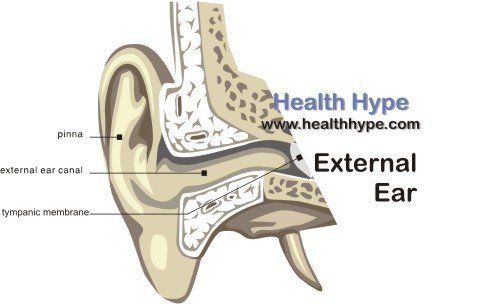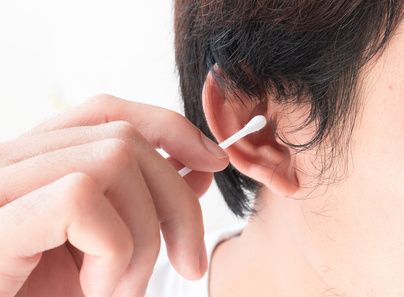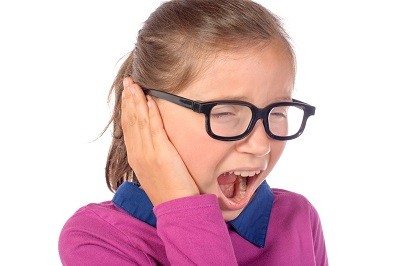Smelly Ears – Causes of Foul Ear Odor, Bad Earwax Smell
An offensive smelling odor from the ear is often assumed to be a sign of infection but there are other non-infectious causes that also need to be considered. The odor may be associated with an ear discharge, ear wax or occur on its own for no clearly identifiable reason. Due to the rather small entrance to the ear canal, an odor emanating from the ear without any discharge is not easily detectable unless there is close contact.
Normal Ear Wax
The lining of the outer ear has sebaceous and ceruminous glands that secrete sebum and cerumen respectively. It mixes with dead skin cells that sloughs off from the lining and outer surface of the ear drum to form a more solid consistency that is known as earwax. Also known as cerumen, earwax has a host of functions including :
- trapping dust and dirt that may enter the ear canal
- expelling sloughed off cells, debris, dust and dirt from the canal
- lubricating the sensitive canal lining which is exposed to the environment
- inhibiting the growth of bacteria and fungi that enter the ear canal
- repelling insects and other small organisms that may enter the ear
Earwax is often bitter tasting due to its chemical composition and this is also helpful to repel small insects from entering the ear canal. It does not have a pleasant odor as a result of its composition, as well as the environmental dust and microbes that it traps on a daily basis.

However, the odor is not so prominent as to be offensive and considered ‘smelly’. Most of us are familiar with this normal odor of earwax. It typically has a greasy or waxy smell.
Causes of a Smelly Ear Odor
There are a host of different ear problems that could result in a smelly ear odor, with or without discharge. Some of the more common causes have been discussed further. However, it is always advisable to seek professional medical attention to diagnose the exact cause. Some conditions like mastoiditis can lead to serious complications.
Hygiene
Excessive cleaning of the outer ear is more likely to result in offensive odors than the untouched ear canal. This is in stark contrast to other parts of the body where a foul odor is a sign of poor hygiene. Most people are afraid of earwax blocking the eardrum and therefore feel the need to intervene.
By interfering with the microenvironment of the outer ear through cleaning with cotton wool cue tips, matchsticks or hair pins, the normal cleaning mechanism is disturbed. The chance of injury and infection is greatly increased (otitis externa / swimmer’s ear). Usually the discharge is odorless and clear but can progress as described below under infections.

In addition, ear wax may become impacted and in rare cases may perforate the eardrum and contribute to cholesteatoma formation. Other factors that may also affect the ear canal and disrupt the cerumen is water in the ears (bathing, swimming pool), detergents, shampoos and allergic reactions usually due to these substances entering the outer ear.
Smelly Ear Infections
An infection of the outer and middle ear (otitis externa and otitis media) is the most common cause of a smelly ear discharge (otorrhea). A purulent discharge may appear white to pale yellow initially. Initially the discharge may be odorless but can progress into a foul smelling odor.
With more chronic infections (like chronic otitis media) or discharge that is not easily expelled, the color may change to a yellow to green mucus secretion. Necrotizing otitis externa is a more likely cause of a smelly ear discharge. Most of these infections are due to bacteria although fungal infections (otomycosis) may also be responsible. It can progress to mastoiditis if not appropriately treated.

Discharge in a fungal infection is usually not as pronounced and may sometimes present just with a clear thin discharge (serous). Otomycosis usually affects the outer ear. Immunocompromised patients are more likely to experience chronic (persistent or recurrent) fungal infections of the middle ear (consider mucormycosis).
Cholesteatoma
A cholesteatoma is a keratin mass in the middle ear. It may be congenital (present from birth) or acquired and predispose the middle ear to chronic infections. In addition, it may cause erosion of the surrounding tissue and even the skull. In a cholesteatoma, the tympanic membrane (eardrum) may be intact. While there is no perforation, ear discharge is still able to exit into the outer ear through a retraction of the eardum.
A cholesteatoma causes a chronic but scanty offensive smelling ear discharge. In the early stages, the condition is often painless and apart from the discharge, only an impairment of the hearing may be noticed. A cholesteatoma is a serious condition that needs immediate medical attention by an ENT specialist (otolaryngologist).
Tumors
Cancer of the ear can affect the outer, middle or inner ear, although temporal bone cancer may responsible in outer ear lesions. In the outer and middle ear, the cancer may cause ulceration and erode surrounding tissue. A foul smelling blood stained discharge and pain is often noted although at times this may not be present. It nevertheless has to be considered as a possible cause especially if there is any degradation of the sense of hearing.
Other Symptoms
A smelly ear is a symptom that may be accompanied by other symptoms such as :
- Ear pain
- Partial or complete hearing loss
- Dizziness
- Ear discharge
- Ringing in the ears (tinnitus)
- Sensation of fullness in the ear
However, no other symptom may be presented beyond the foul odor emanating from the ear.
Treatment
The treatment depends on the underlying cause. Recurrent infections needs to be treated appropriately, and in most cases this is bacterial and requires the use of antibiotics. Cotton balls impregnated with corticosteroids may be packed into the ear to reduce swelling of the ear canal. This is a temporary measure. A cholesteatoma and tumors requires surgical removal by an otorhinolaryngologist (ENT surgeon). Cleaning of the ear canal must be avoided altogether to allow the area to heal and for the normal microenvironment within the ear to restore.
References
- Cholesteatoma. Medscape
Last updated on September 15, 2018.



